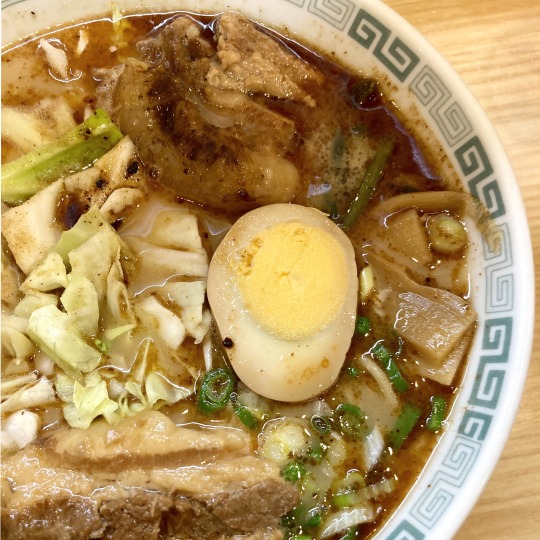#桂花
Text

やっぱりこれが好き。
みぞれが降る中、HDの新型撮影をしたあと、
桂花ふあんてんでランチ。
太肉麺最高。
20230123
#food#japan#foodporn#foods#foodgasm#food photography#foodstagram#ramen#noodle#ラーメン#豚骨ラーメン#熊本ラーメン#桂花らーめん#桂花#新宿#太肉麺#ターロー麺
20 notes
·
View notes
Photo

✿ 桂花糕 | Osmanthus cake
・グイホアガオ。甘い香りのキンモクセイは、幸運、繁栄、富の意味を持っています。8月はキンモクセイを見るのに最適な時期であり、8月15日の中秋節も月を眺めるのに良い時期です。古代人は自然に甘い香りのモクセイを中秋節と関連付けていたので、中秋節で甘い香りのキンモクセイを食べる伝統があります。
#桂花糕#桂花#糕#糕点#osmanthus cake#中国:中秋#中国:中秋節#中秋#中秋節#中秋の名月#中国#中国:2020〜#きんもくせい#金木犀#キンモクセイ#中国:糕#中国:秋#season:秋#グイホアガオ
4 notes
·
View notes
Text

Besides climate, temperature, and humidity, genes also play a crucial part in the blooming time of osmanthus.
For something to "happen", it's not due to one and one reason alone, but the accumulation of all the affinities coming together.
Life gets a little bit easier if we accept this.
0 notes
Photo

四季飄香的 #桂花 #沐心泉休閒農場 #20230204(在 沐心泉休閒農場) https://www.instagram.com/p/CoPHmwnri_9/?igshid=NGJjMDIxMWI=
0 notes
Text


四號公園旁的巷弄咖啡廳,坪數不大,卻十分愜意!在與老闆談話的過程中,歡笑不斷也親自感受到這家店的堅持。
以木質調風格傳達整間的店的氣質,雖然兩三張桌子無法久坐,但我卻特別喜歡在綿綿細雨中來訪「然咖啡」,很幸福能坐在戶外的唯一座位,我也跟老闆說:「我可以一直坐在這片竹席上!」
1 note
·
View note
Photo

#Kumamoto #Ramen #Ma oil #Keika #熊本ラーメン #マー油 #桂花 (Yokohama) https://www.instagram.com/p/CkDjH21v0iw/?igshid=NGJjMDIxMWI=
1 note
·
View note
Photo

【サンヨー食品 名店の味 桂花 熊本マー油豚骨】を食べました😋 炒めたガーリックの風味豊かなマー油を合わせたまろやかで濃厚なうまみの豚骨スープです。張りとしっかりとした噛み応えのあるコシの強い中太ちぢれ麺&具材はチャーシュー、茎わかめ、焦がしガーリック、ねぎ。〔税抜き260円〕 ⭐️⭐️⭐️星みっつでした🎉 ※私の独断と偏見で3段階評価させていただきました。 #カップ麺 #カップラーメン #ラーメン 動画はこちら https://youtu.be/N6YVSnBt488 #サンヨー食品 #名店の味 #桂花 #熊本マー油豚骨 #炒めた #マー油 #張り #茎わかめ #焦がしガーリック https://www.instagram.com/p/CjPa-XhOXt3/?igshid=NGJjMDIxMWI=
0 notes
Text
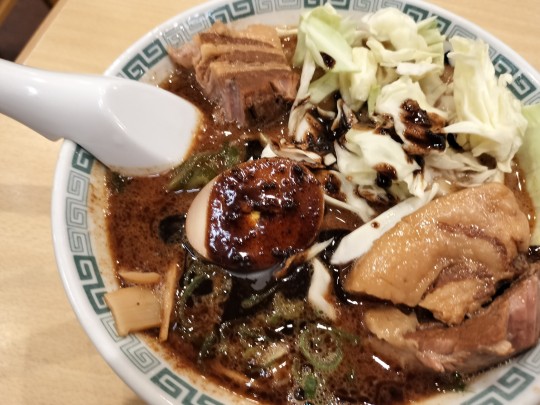
赤坂見附に移転したPR会社での展示会に顔を出してから、旧友に会うべく新宿へまわる。
酒を入れる前に、桂花ふあん店で太肉麺注入。
美味すぎます。
20240119
#food#japan#foodporn#foods#foodgasm#food photography#foodstagram#ramen#noodle#ラーメン#新宿#桂花#桂花ラーメン#熊本ラーメン#らーめん#九州らーめん#とんこつラーメン
2 notes
·
View notes
Text
“欲买桂花同载酒” / Zhongli’s osmanthus wine idle line
(Disclaimer: I don’t know that much about syntax, so I apologize for the wildly inaccurate syntax trees. I made the mistake of warming up with something that’s not English prose haha… I’ll be focusing on the meaning of the line and its hanzi characters, so the syntax is only there to help me explain some things.)
.
“欲买桂花同载酒”…
.
This line is from the Chinese songci (宋词, a form of traditional Chinese poetry) 《唐多令·芦叶满汀洲》,by 刘过 (Liu Guo). It’s the one referenced in Zhongli’s osmanthus wine idle line in Chinese. (By the way, it does not directly mean “Osmanthus wine tastes the same as I remember”, but more on that later.)
载 (zai3) as a verb could have the meaning of “to carry (something)(with a vehicle)”. For example, “这车可载三箱酒。” = “This car can carry three crates of wine.”
And since the rest of the songci talks about a harbour scene with boats, 载 could indeed be seen as a verb in the poem’s context, and the vehicle is implied to be a boat. So in the context of the songci, this line could be understood in English prose as “[I] wish to buy some osmanthus and ride [a boat] along with some wine.”
.
However, despite the songci’s context, none of these hanzi characters in the line itself directly mean “boat”. While looking at it closer today, the syntactic structure felt a little strange to me even though I’m not familiar with Chinese songci syntax.
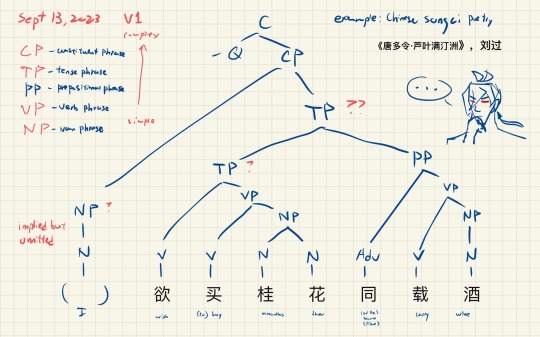
It turns out 载 has multiple meanings. 载, pronounced with the fourth tone (zai4), as a preposition used in pairs (in modern Chinese), could mean “simultaneously” or “at the same time”. For example, 载笑载哭 should probably mean “laughing at crying at the same time” or “laughing while crying”…
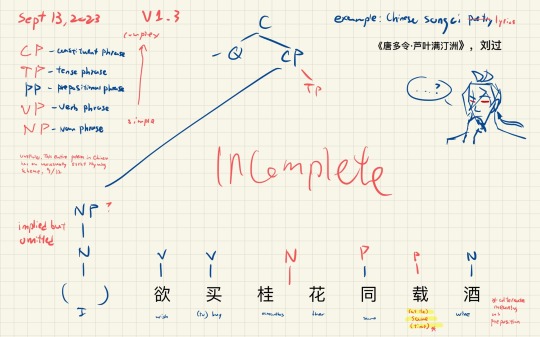
Also, the original songci doesn’t follow the osmanthus line with a section about old friends, but instead the idea of old friends is actually mentioned two lines prior. For the bolded sections, I’m doing a modern English translation, referencing the modern Chinese translation from the Gushiwen website here, but note that the original songci uses the poetic Chinese wenyan (文言) syntax.
.
“黄鹤断矶头,故人今在否?旧江山浑是新愁。欲买桂花同载酒,终不似,少年游。”
“故人今在否?” = “Are [my] old friends still alive in this moment?”
“欲买桂花同载酒” = “[I] wish to buy some osmanthus and ride [a boat] along with some wine.”
.
It’s pretty cool that Genshin Impact alluded to the friends idea present in the poem too. Also, both Liu Guo’s songci poem and Zhongli’s line use the term 故人 (gu4ren2) to mean “old friend(s)”.
.
Meaning, Zhongli’s poetic-sounding Chinese idle line “欲买桂花同载酒…只可惜故人,何日再见呢?” is closer to “I wish to buy some osmanthus and also some wine… But as for those old friends, when would I meet them again?” in modern English with the game’s context (without taking into account that the real poem alluded to here is about boating). (This is a rough translation that follows the overall sentence structure in Chinese a little closer.)
Thus Genshin Impact’s English localization of “Osmanthus wine tastes the same as I remember… But where are those who share the memory?” might actually be okay in terms of meaning even if it lacks the nuance from the poetic reference. Well, I would’ve liked the first part (the songci) to be localized in Shakespearean English, and the second part to be in modern English, since the difference in syntax and tone still stands out a lot in Chinese… In an English localization, if a character who usually speaks in English prose suddenly quotes something in Shakespearean English, it’s easier to pick up on the fact that it might be a line of poetry ‘cause of the contrast, I believe.
.
Somewhat unrelated, but in terms of poetic structure, it seems the entire poem in Chinese has an usually strict rhyming scheme, rhyming nine out of the twelve ending sounds together (roughly speaking. Not gonna go into the phonology of it haha)
Usually Chinese songci have a more diverse (?) rhyming scheme. E.g. “水调歌头•明月几时有” by 苏轼 (Su Shi), which miiight be the base inspiration for Liyue’s general storyline and cast
.
In the end… Zhongli quotes a line of songci with seven hanzi/syllables. It’s a wild guess but maybe it refers to the original Seven Archons?
欲买桂花同载酒…只可惜故人,何日再见呢…
#dusk analysis#Genshin translation#zhongli#songci#Chinese poetry#osmanthus wine#Genshin analysis#钟离#宋词#原神#欲买桂花同载酒#translation#syntax#linguistics#Liyue#genshin impact#Chinese#game translation
20 notes
·
View notes
Text
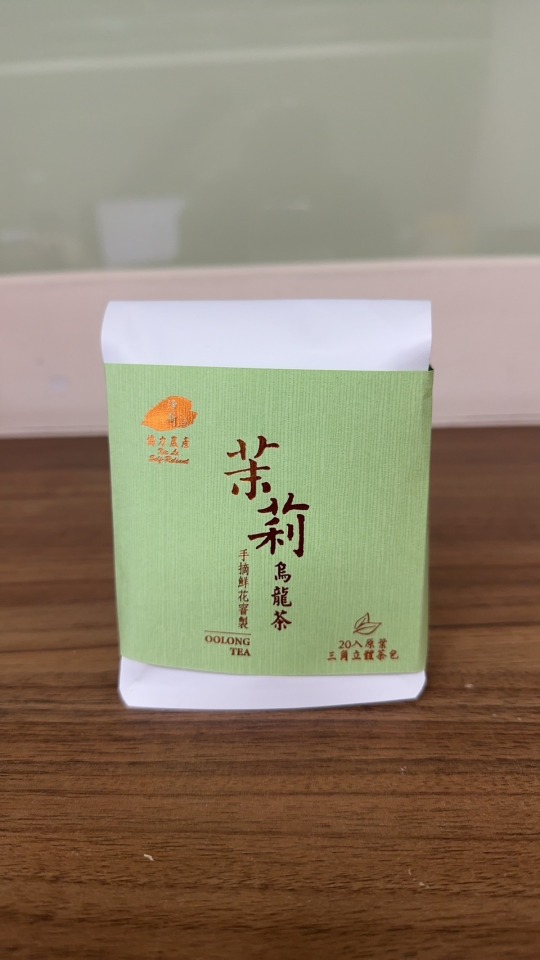



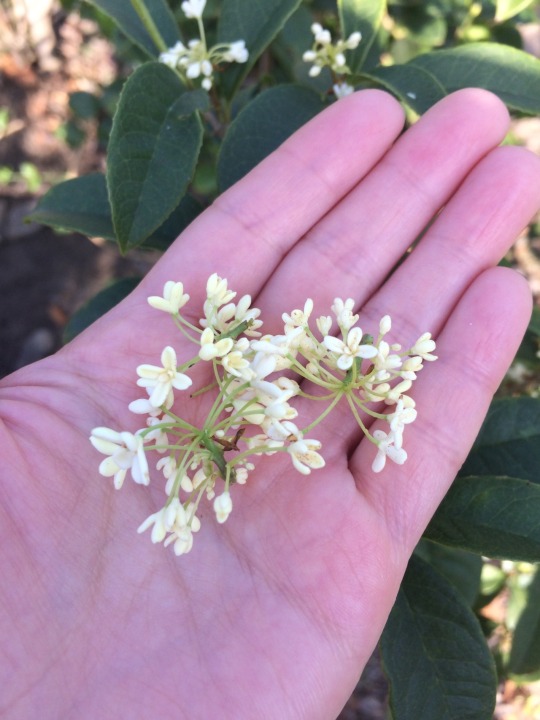
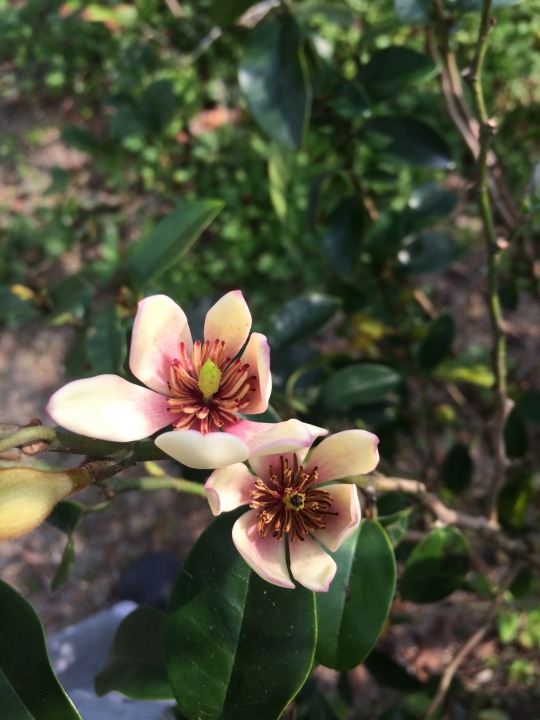

always happy to see the plants we grow at the osmanthus garden become a product on the shelves!
This is our infused tea series.
0 notes
Text

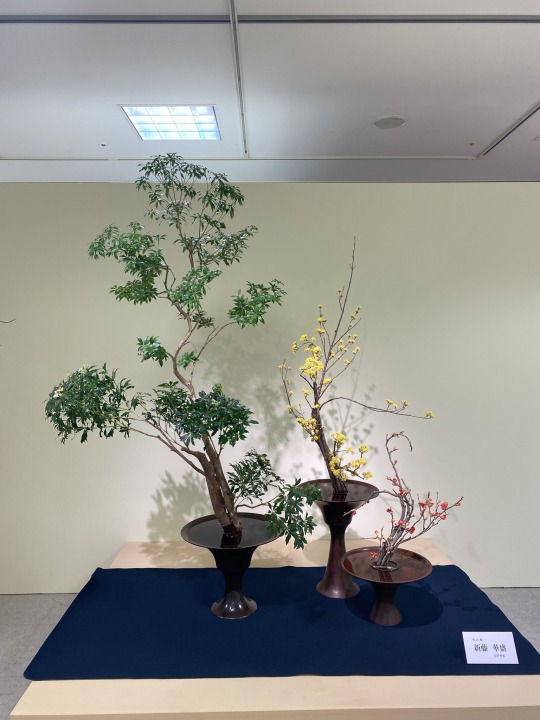


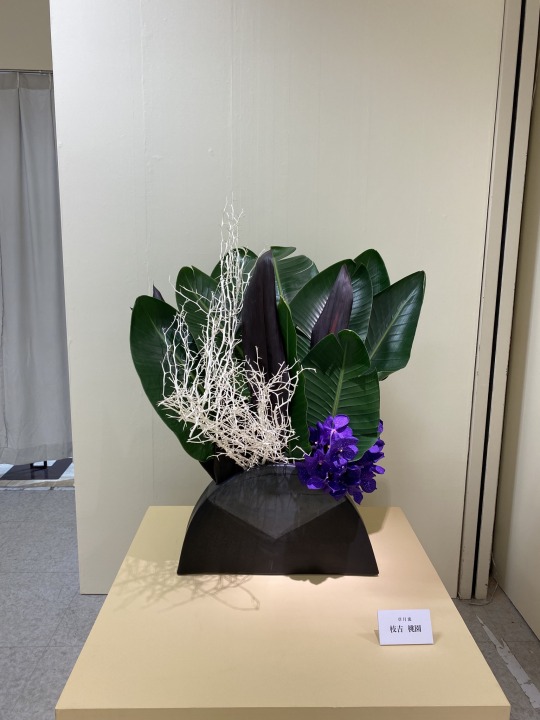


3月に新宿高島屋で開催された、いけばな協会展。
習ってる小原流以外の流派もたくさん出瓶されてて、それぞれ素敵(*´∀`*)
#古流松藤会 #桂古流 #一葉式いけ花 #松風花道会 #草月流 #古流理恩会
19 notes
·
View notes
Text
Detoured to Nine Fresh (九鲜) at Sun Plaza to buy their jelly desserts. Noticed that they have a new Osmanthus Ai-Yu Specials (桂花爱玉冻) promotion for the month of June. Ordered the Osmanthus Ai-Yu (B) for myself and Fruity Ai-Yu Jelly for mum. Both are priced at S$3.80 each plus I asked for red beans (S$0.70) add-ons for both the jellies. Luckily, I checked as the staff forgotten the red beans so she just scooped it on top of everything resulting in the messy appearances.


Alas, when I opened the cover to eat, I found that she had also gotten my order wrong. :( Instead of the honey version of Osmanthus Ai-Yu (B), she gave me Osmanthus Ai-Yu (珍珠芦荟桂花冻)! It came with osmanthus ai-yu jelly, aloe vera cubes, black pearls and taro balls. I never like those chewy bubble tea pearls which is also the reason I don’t fancy bubble tea.

Here is mum’s Fruity Ai-Yu Jelly (水果晶球爱玉冻). She enjoyed her ai-yu with fruity aloe vera pearl, mango pearl and konjac jellies. Also included with the dessert are milk and taro balls of different colours.
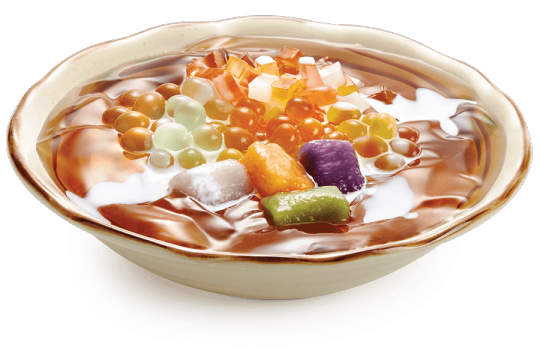
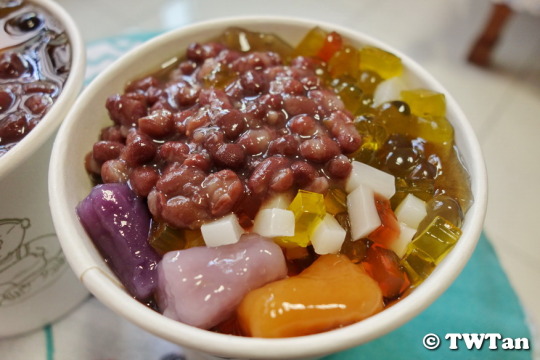
Selected images from Nine Fresh.
#Nine Fresh#九鲜#Limited Time Promotion#Osmanthus Ai-Yu#桂花爱玉冻#珍珠芦荟桂花冻#Ai-Yu#爱玉#Aloe Vera#Pearls#Taro Balls#Milk Balls#Fruity Ai-Yu Jelly#水果晶球爱玉冻#Konjac Jelly#Mango Jelly#Sweet#Treat#Dessert#Food#Buffetlicious
12 notes
·
View notes

